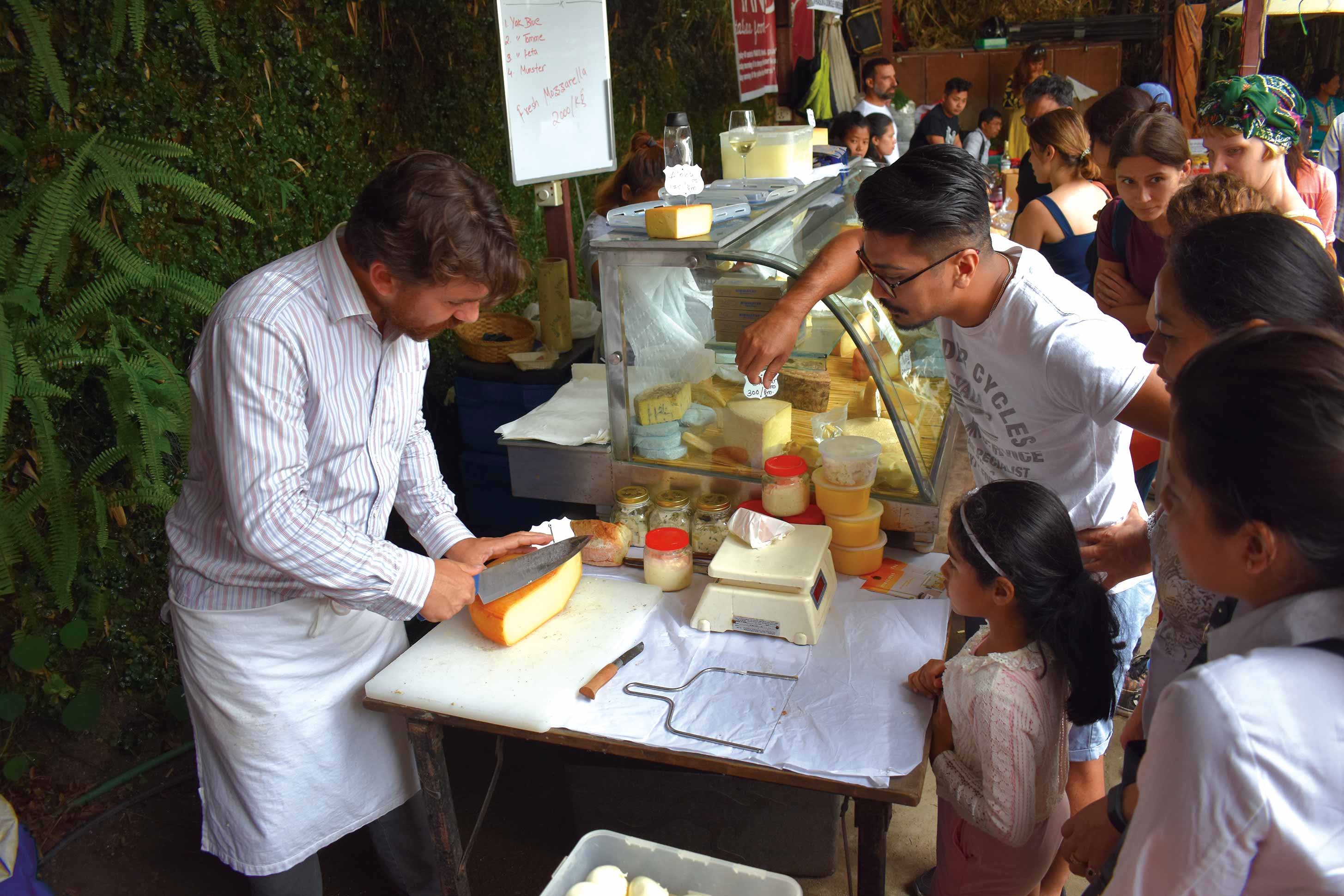A simmering, delectable Sherpa broth
Home bound with a book on a rainy day, I craved for something warm to satiate my hunger. Simple to make, healthy to eat and a ‘comfort’ food that I only recently came across - “Shyakpa” is perfect for the occasion. It is essentially a flavourful stew with crunchy leafy veggies, fresh chunky meat and soft dough strips stirred in. Like most Nepali dishes though, this Sherpa delicacy, that most people who try once can’t get enough of, is passed on to the next generation through word of mouth and adapted according to one’s palate. There is no ‘one’ recipe but a myriad variations and this flexibility adds a touch of uniqueness each time you try it.
 “It’s an everyday food for us back in Solukhumbu,” recollects Ngawang Lakhpa, who owns a tiny secluded cave-like restaurant in Boudha. He headed to Kathmandu, like most, for a little more income to fend for his family and secure a better future for his kids. Though he didn’t serve Shyakpa as a regular item on his menu, he made a bowl for us while chatting about his ancestors, kids, child marriages and the clear running water from the Himalayas. His fond memories of the dish and home led to an evening hour conversation over a glass of chhyang (home-brewed liquor from fermented rice) first. As the steamy homemade stew made way to our table, Ngawang gave us a quick recipe that I remember at the tip of my fingers. Add some ragged swatches of flattened wheat flour dough to a sauté of veggies and meat, pour in some water and bring the lovely cloudy broth to a boil. Put in some salt and pepper (if you like) and Tada! Shyakpa is ready to be savored. It’s expensive and to some extent monotonous to have daal bhaat for most meals in the mountains.
“It’s an everyday food for us back in Solukhumbu,” recollects Ngawang Lakhpa, who owns a tiny secluded cave-like restaurant in Boudha. He headed to Kathmandu, like most, for a little more income to fend for his family and secure a better future for his kids. Though he didn’t serve Shyakpa as a regular item on his menu, he made a bowl for us while chatting about his ancestors, kids, child marriages and the clear running water from the Himalayas. His fond memories of the dish and home led to an evening hour conversation over a glass of chhyang (home-brewed liquor from fermented rice) first. As the steamy homemade stew made way to our table, Ngawang gave us a quick recipe that I remember at the tip of my fingers. Add some ragged swatches of flattened wheat flour dough to a sauté of veggies and meat, pour in some water and bring the lovely cloudy broth to a boil. Put in some salt and pepper (if you like) and Tada! Shyakpa is ready to be savored. It’s expensive and to some extent monotonous to have daal bhaat for most meals in the mountains.
So, Shyakpa is a preferred alternative and staple among Sherpas, he claims - a soup you’d enjoy in the cold wintry nights at higher altitudes cooked generally with locally and readily available yak meat and potatoes.
Back in Kathmandu though, Shyakpa is popularized as “Thenthuk” and is easily available at most Tibetan eateries. The flour sheets used in the recipe are pulled out from softly kneaded dough and made into flat strips, that’s how Thenthuk got it’s name:“Then” means “pull” and “thuk” for “noodles”. I sat down with a bowl of chicken Thenthuk at a small but bustling Tibetan joint in Thahiti chowk. This one was richer in veggies - palungo ko saag (spinach), thinly chopped carrots, raddish, a hint of tomatoes and garnished with coriander and spring onions accompanied by crushed pods of the aromatic timur on the side. Variety is the spice of city life they say, sprinkle some of it into the simple serving and you’re concocting your own little gastronomic adventure while the soothing essence remains intact as it rains outside and I wrap my palms around the hearty warm bowl and gulp down a delicious mouthful of Shyakpa.











